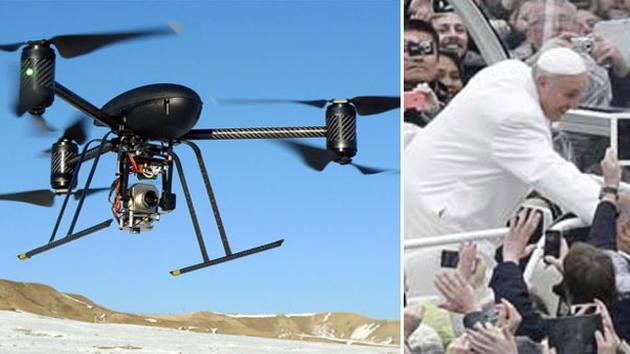When 28 pounds of heroin made it across the U.S.-Mexico border near Calexico in April, it didn’t come by the usual methods of car, truck or tunnel. It came by drone, federal authorities said Wednesday, making it the first cross-border seizure by U.S. law enforcement involving the new smuggle-by-air tactic.
Two men pleaded guilty Tuesday to retrieving the drugs near state Route 98 in Imperial County, a pickup that was captured on Border Patrol cameras on April 28, according to court records.
“With border security tight, drug traffickers have thought of every conceivable method to move their drugs over, under and through the border,” U.S. Attorney Laura Duffy said in a statement.“We have found their tunnels, their Cessnas, their jet skis, their pangas, and now we have found their drones.”
U.S. law enforcement call the use of drug-laden drones from Mexico an emerging threat, yet at the same time have questioned how profitable the practice might be because drones, or unmanned aerial vehicles, are limited in how much they can carry.
Lauren Mack, spokeswoman for U.S. Homeland Security Investigations in San Diego, said authorities have been prepared for cross-border drones since at least last year when they received a tip that smuggling operators may be considering the tactic.
But thus far, the activity appears to be more about test runs, authorities said.
Ronnie Martinez, assistant special agent in charge for Homeland Security Investigations in El Centro, said various law enforcement agencies along the border have banned together to wipe out the smugglers’ “illicit experiments.”
“The use of drones to smuggle drugs across the U.S.-Mexico border is an emerging threat, which fortunately, has not proven to be a lucrative criminal enterprise in the Imperial Valley,” Martinez said in a statement.
Specialized units have also been formed to detect and combat all aerial drug smuggling, including planes and ultralight aircraft, another up-and-coming trend.
Drones as a drug-smuggling tool made news in January when one hauling meth crashed in the parking lot of a Tijuana shopping center, two miles from the U.S. border. It was loaded with about seven pounds of drugs and was likely being ferried from neighborhood to neighborhood, Mexican law enforcement said.
The weight of its load might have brought it crashing down, they said.
U.S. authorities in California said at the time that no drone smuggling had yet been detected north of the border.
But it didn’t take long.
Months later, Border Patrol camera operators spotted a person walking in a field near Calexico with a large object, then wave down a vehicle, according to the complaint. The large item was thrown in the trunk, the person climbed into the passenger seat and the vehicle took off.
Agents stopped the suspect vehicle nearby and found a duffel bag full of drugs in the trunk. The drugs later tested positive for heroin.
The driver, Jonathan Elias, 18, told agents in an interview that he’d known the passenger, Brayan Valle, about a month, according to the complaint. He said Valle had called and asked to pick up him and the drugs for $100.
Valle, 19, also admitted picking up the drugs, as well as a drone controller, according to his plea agreement.
They each pleaded guilty Tuesday in El Centro federal court to one count of possession of drugs with intent to distribute. They are set to be sentenced in San Diego on October 20.
Their plea agreements don’t give further details about the drone itself or who operated it.
Small drones, which have become easily accessible and affordable to the general public, can fly up to an hour and as far away as five miles, and some can be navigated by preset GPS coordinates. Mexican media has reported that drug cartels are commissioning engineers for custom-made drones.
Drug-smuggling drones have been reported going over prison walls in other countries, including Australia and Brazil, and just last week one crashed in an Ohio prison yard. It was carrying heroin, marijuana and tobacco.
http://www.sandiegouniontribune.com/news/2015/aug/12/drone-smuggle-heroin-us-calexico-drug/



